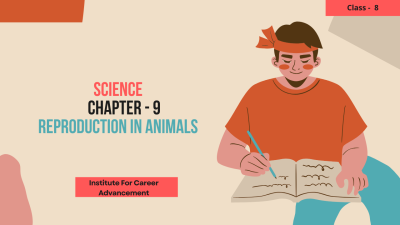Reproduction in Animals - Class 8
Reproduction in Animals" for Class 8 explores how animals reproduce to ensure the continuation of their species. Students learn about the different methods of reproduction, including sexual and asexual processes, and delve into the anatomical structures and physiological processes involved in the reproductive systems of both male and female animals. The course covers fertilization, embryonic development, and various reproductive strategies found across different animal species. It also touches upon ethical considerations and societal implications related to animal reproduction, providing a foundational understanding of biological concepts crucial for further studies in life sciences 8ম শ্রেণীর জন্য 'রিপ্রোডাকশন ইন অ্যানিমেলস' অনুসন্ধান করে যে কীভাবে প্রাণীরা তাদের প্রজাতির ধারাবাহিকতা নিশ্চিত করতে পুনরুত্পাদন করে। শিক্ষার্থীরা যৌন ও অযৌন প্রক্রিয়া সহ প্রজননের বিভিন্ন পদ্ধতি সম্পর্কে শেখে এবং পুরুষ ও মহিলা উভয় প্রাণীর প্রজনন ব্যবস্থার সাথে জড়িত শারীরবৃত্তীয় কাঠামো এবং শারীরবৃত্তীয় প্রক্রিয়াগুলি অনুসন্ধান করে। এই কোর্সে নিষিক্তকরণ, ভ্রূণের বিকাশ এবং বিভিন্ন প্রাণী প্রজাতির মধ্যে পাওয়া বিভিন্ন প্রজনন কৌশল অন্তর্ভুক্ত রয়েছে। এটি প্রাণী প্রজনন সম্পর্কিত নৈতিক বিবেচনা এবং সামাজিক প্রভাবগুলিকেও স্পর্শ করে, যা জীবন বিজ্ঞানে আরও গবেষণার জন্য গুরুত্বপূর্ণ জৈবিক ধারণাগুলির একটি ভিত্তিগত বোঝাপড়া প্রদান করে।
English
Last updated
Wed, 27-Nov-2024



















